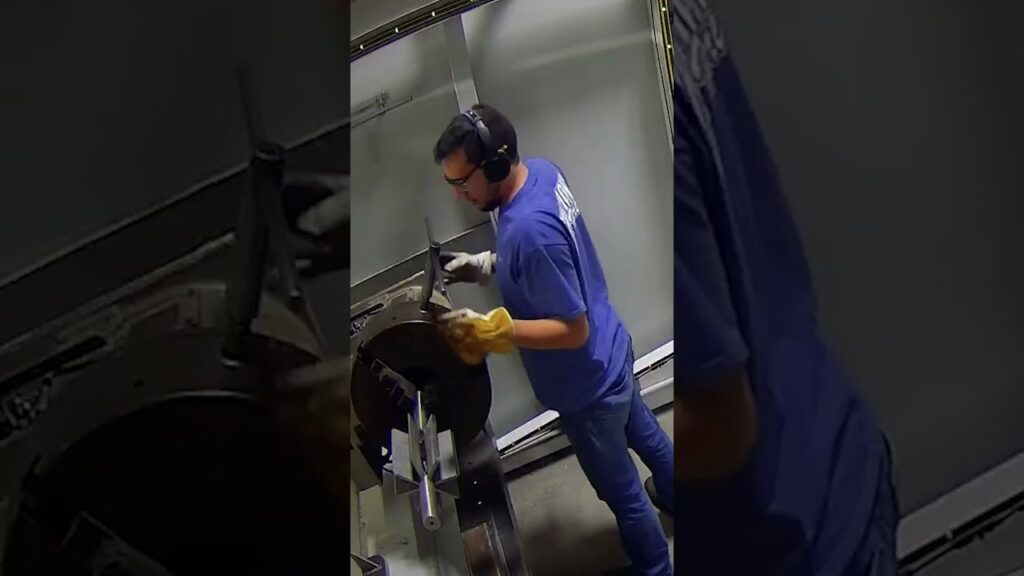Overcoming the Dusty Conundrum: Understanding the Root Causes of Abandoned Robots
Robots, once seen as the pinnacle of technological advancement, have become a common sight in various industries. They offer efficiency, precision, and automation that promises to revolutionize the way we work. However, it is an unfortunate truth that many of these mechanical marvels often find themselves gathering dust in a forgotten corner. This is not an isolated phenomenon but a prevalent issue that plagues the world of industrial robotics. In this article, we will delve into the reasons behind this predicament and explore potential solutions to ensure the effective utilization of these machines.
One must question why this occurs so frequently. The answer lies within the initial implementation process and the subsequent factors that contribute to the abandonment of robots. To unravel this mystery, we turn our attention to a video titled "Mistake #1 When Using Robots | ABAGY ROBOTIC WELDING" which sheds light on some of the key insights regarding this matter.
The video starts by introducing the concept of industrial robots and their purpose in enhancing productivity. From assembly lines to welding processes, robots have carved a niche for themselves in the manufacturing industry. However, as the presenter highlights, there is one glaring mistake that often hampers the journey towards successful integration – a lack of comprehensive understanding of the types of industrial robots available.
Industrial robots come in various shapes, sizes, and functionalities, each tailored to specific tasks and environments. Without a thorough understanding of these nuances, choosing the wrong type of robot for a particular job becomes a recipe for disaster. The video emphasizes the importance of matching the robot's capabilities with the demands of the task at hand.
Types of Industrial Robots: A Gateway to Success
Various types of industrial robots exist, each with its unique strengths and weaknesses. These types include cartesian robots, cylindrical robots, delta robots, parallel robots, and more. A cartesian robot, for instance, excels in linear movements and is commonly used in pick-and-place operations, while a delta robot with its spider-like structure is well-suited for high-speed operations, making it ideal for packaging and sorting tasks.
Ignoring the significance of selecting the right type of robot not only leads to subpar performance but also places an unnecessary burden on the company's resources. It is not uncommon to witness robots trudging through tasks for which they were ill-equipped, ultimately succumbing to inefficiency and abandonment.
Fostering Collaboration and Breaking Down Silos
The video further sheds light on another crucial aspect that impacts the utilization of robots – the communication gap between departments. Often, a disconnection between managers, engineers, and employees exists, leading to incorrect assumptions, miscommunication, and ultimately, the deployment of the wrong robots.
The speaker emphasizes the significance of fostering collaboration and breaking down the silos that hinder effective decision-making. By involving all stakeholders from the onset of the robot implementation process, a better understanding of the operational requirements can be achieved. This ensures that the right robot is selected and that all parties involved are on the same page.
Furthermore, continuous training and knowledge sharing are vital to bridge the gap between the technical engineers responsible for robot maintenance and the end-users. By fostering a culture of learning and openness, the company can maximize the benefits of their robotic investments, resulting in improved productivity and efficiency.
Moving Forward: Harnessing the Potential of Industrial Robots
It is evident from the insights provided in the video that the root cause behind robots gathering dust lies within the early stages of implementation and the subsequent lack of understanding about the available options.
To overcome this challenge, companies must prioritize the education and training of their teams. By equipping technical engineers, sales representatives, and decision-makers with comprehensive knowledge about the various types of industrial robots and their functionalities, they can avoid the pitfalls that lead to abandonment.
Furthermore, fostering open communication and collaboration between departments and stakeholders is paramount. By leveraging the collective expertise and perspectives of all involved parties, the selection and implementation process can be streamlined, leading to increased success rates and reduced instances of abandoned robots.
In conclusion, the prevalence of abandoned robots gathering dust in corners is a persistent issue in the world of industrial robotics. However, by rectifying the mistakes made during the initial implementation process and addressing the underlying causes, companies can unlock the full potential of these machines. By emphasizing the importance of selecting the right type of industrial robot and fostering collaboration between departments, we can navigate towards a future where robots thrive and productivity soars.
Reference:
Mistake #1 When Using Robots | ABAGY ROBOTIC WELDING: [Video link]
Industrial Robot
"Common Error in Robot Utilization and Industrial Robot Categories: Insights from ABAGY Robotic Welding"


